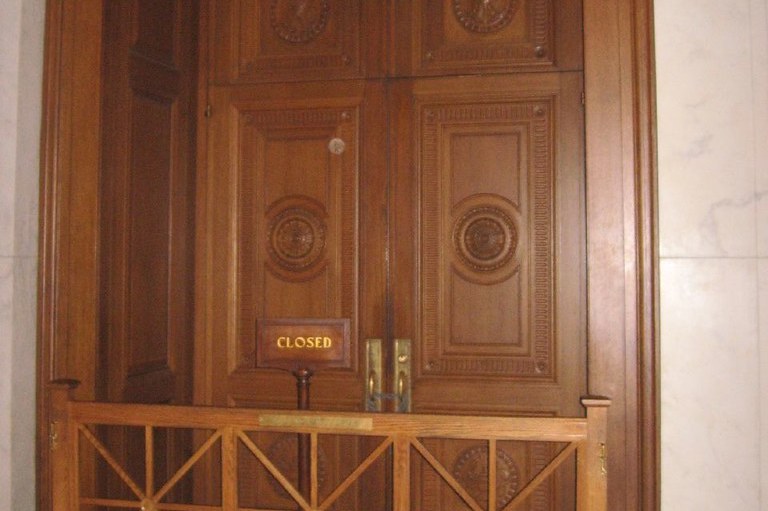This week’s top three summaries: R v MC, 2023 ONCA 611: right to #present, R v JDC, 2023 ABCA 255: s.715.1 #memory, and R v Harasiuk, 2023 ONCA 594: joint submission #sentencing
Our firm focuses on representation in complex criminal trials and criminal appeals. We also provide ghostwriting services to other firms for written submissions. Consider us for your appeal referrals or when you need written submissions on a file.
Our lawyers have been litigating criminal trials and appeals for over 16 years in courtrooms throughout Canada. We can be of assistance to your practice. Whether you are looking for an appeal referral or some help with a complex written argument, our firm may be able to help. Our firm provides the following services available to other lawyers for referrals or contract work:
- Criminal Appeals
- Complex Criminal Litigation
- Ghostwriting Criminal Legal Briefs
Please review the rest of the website to see if our services are right for you.
R v MC, 2023 ONCA 611
[September 11, 2023] Right to be Present at Trial: Stage 2 O'Connor [Reasons by David M. Paciocco J.A. with Grant Huscroft and S. Coroza JJ.A. concurring]
AUTHOR’S NOTE: Most often, problems with the presence of the accused arise in self-represented situations where accused persons are intentionally or unintentionally misbehaving in court such that courtroom decorum is lost and they must be removed to continue with trial proceedings. Here, the defence sought records of complaints to Crime Stoppers by the accused himself, but upon advancing to the second stage argument about the records before the judge, counsel for Crime Stoppers asked for an ex parte hearing of his submissions with the accused excluded. This was granted by the trial judge and resulted in a new trial on appeal.
OVERVIEW
[3] M.C. argues that the trial judge erred contrary to s. 650 of the Criminal Code in excluding him from his trial when the trial judge received ex parte submissions from a third-party records holder during a s. 278 application that he had brought in aid of his defence (the “s. 650 error”). He also argues that the trial judge misdirected jurors by not relating the evidence to his defence submissions, and he seeks leave to argue that the trial judge committed errors of principle in sentencing him to 20-months’ imprisonment and a 2-year probation term, with ancillary orders.
[4] For the reasons that follow, I would allow his appeal of the s. 650 error ...
THE MATERIAL FACTS AND THE STATUTORY CONTEXT
[5] On January 18, 2018, M.C. responded to a Backpage.com ad for sexual services in York Region that was posted as part of Project Raphael, an undercover investigation intended to reduce the demand for underage prostitution. A police officer, posing as a 14-year-old female (the “subject”) responded to inquiries with electronic messages.
[6] Although the ad represented the subject to be 18, and photographs of the body of a female police officer were included in the ad to depict her, the ad was designed to be alluring to those interested in sex with young females. The subject was described as young, inexperienced, and fresh to the industry, and the photographs of the female police officer depicted her wearing a high school logo.
8] On January 26, 2018, after agreement was expressed to engage in sexual services through a “car call”, M.C. travelled to the area of the designated location at the agreed time. He purchased the Belmont cigarettes nearby at a location that was messaged to him. The purchase of the cigarettes was witnessed by an undercover officer. M.C. was then arrested. A box of condoms was discovered in his vehicle, as well as sufficient cash money to pay the agreed price. Much of the money he was carrying was discovered in his wallet, which was hidden between the seat and console in the vehicle.
[9] M.C. sought to defend himself during the evidentiary phase of the trial by claiming that he did not believe the subject was under 18-years of age. He acknowledged being an experienced user of escort services and testified that based on suspicious features of the ad and the exchanges that occurred, he believed that the ad was likely posted by persons intending to rob or rip off patrons, or possibly an ad posted by police officers. He said he intended to investigate with the intention of exposing the scam or reporting any under-age sex worker he may encounter. He related personal experiences that he claimed reinforced his opposition to child sex work.
[10] In order to support this defence, M.C. presented evidence in an effort to confirm his history of: (1) sending reports to “abuse@backpage.com”, (2) posting “warning ads”, and (3) submitting tips to Crime Stoppers about scams and suspected underage prostitution. This evidence did not unequivocally support his claim that these communications were intended, in part, to protect underage sex workers.
[11] Although the abuse@backpage.com reports were sent on backpage.com documents bearing the subject line, “Child Exploitation Report”, the eight reports M.C. sent included internet addresses without describing the nature of his concern about those addresses.
[12] With respect to the twelve “warning ads” he placed in Backpage.com, those ads warned other Backpage.com users of “scams” and “robbers” posing as sex workers.
[13] As for the three Crime Stoppers documents he produced, those documents confirmed that M.C. had provided Crime Stopper tips but did not disclose the nature of those tips. The tendered documents depicted internet responses from Crime Stoppers confirming that he had submitted unidentified Crime Stopper tips. Two of those three documents, filed as exhibits 16B (October 17, 2015), and 16C (October 19, 2016), were screenshots of the Crime Stoppers tip confirmation documents. The third such document, filed as exhibit 16A (November 17, 2012), may have been a picture of the phone displaying the Crime Stoppers confirmation, instead of a screenshot.
[14] The Crown challenged the credibility of M.C.’s defence, including by suggesting during lengthy and repetitive cross-examination that the documentation he produced confirmed that his only concern was with rip-offs and scams and had nothing to do with underage prostitution. The Crown pointed out during the cross‑examination that M.C. did not have emails or screen captures of the Crime Stoppers reports he made. The cross-examination included focused questioning, in this regard, that challenged M.C.’s account by having him admit that he did not have documentation related to Crime Stopper tip exhibit 16A showing what the November 17, 2012 tip was actually about. ...
[15] On two occasions while being cross-examined, M.C. responded by claiming that Crime Stoppers refused to provide requested details of his complaints, but the trial judge directed the jury to disregard this evidence as hearsay.
[16] In closing submissions, the Crown said:
I am going to suggest that the evidence is clear that the only reason he made any type of report is not because he was concerned about a child being exploited, but because he either got robbed or ripped off.
[17] Prior to the evidentiary phase of the trial beginning, M.C.’s counsel had clearly anticipated that M.C.’s account was going to be challenged in this way. He therefore brought a third-party records application, pursuant to s. 278.3 of the Criminal Code.
[19] In that application, M.C. sought an order requiring Crime Stoppers to produce documentation in its possession relating to the October 17, 2015 Crime Stoppers tip, and the October 19, 2016 Crime Stoppers tip, but not what was done with those tips. It is evident from his submissions during the third-party records application that M.C.’s counsel confined the application to the two October Crime Stoppers tips because these were the only tips he could demonstrate with supporting documentation, and s. 278.3(3)(a) requires an applicant to provide “particulars identifying the record that the accused seeks to have produced”. It was not until after the application judge’s ruling that the defence discovered electronic messages confirming the November 17, 2012 Crime Stoppers tip.
[20] Both M.C. and the Crown consented explicitly to waive informer privilege for the purposes of the application.
[22] Stage 2, which is only undertaken if the applicant meets their stage 1 burden, involves the review of the records by the trial judge to determine whether to produce records to the applicant: Mills, para. 14. Section 278.7(1) sets out the pre‑requisites to production of the records to an applicant. One of those pre‑requisites, again, is “likely relevance”. Since the judge will have reviewed the documents before making this second “likely relevance” determination, they will know the actual contents of the records. Therefore the “likely relevance” inquiry no longer focuses on what the documents are likely to contain (as it will at stage 1) but focuses instead on whether the known contents could relate to “likely” issues.
[23] Before ordering production to the applicant, the application judge must also be satisfied that production is “necessary in the interests of justice”. Once again, this inquiry is undertaken by applying the same considerations described above in para. 21 of these reasons, although at this juncture the determination of whether production is “necessary in the interests of justice” will be made with the benefit of having seen what the records actually contain: Mills, para. 54.
[24] In this case, the trial judge heard submissions relating to both stages of the s. 278.3 application at the same time. During those submissions counsel for Crime Stoppers argued that the records would not be “likely relevant” unless they relate to an issue that is contested between the parties and they contain evidence that the Crime Stoppers tips were about under-age sexual services. The other parties expressed agreement with the latter “likely relevance” submission but made no comment on whether, to be relevant, evidence must relate to an issue that is contested.
[25] Counsel for Crime Stoppers also argued that if the trial judge found the evidence to be “likely relevant”, the proceedings should move in camera for stage 2 and the court should invite submissions, and that during the in camera hearing the accused and his counsel are to be excluded. Only he could attend.
[26] M.C.’s counsel objected strongly to proceeding in this way. He argued that since the s. 278 application was part of his trial, neither M.C. nor his counsel could be excluded during stage 2 submissions.
[27] At the end of Crime Stoppers’ submissions, the trial judge took a recess during which he prepared his decision on stage 1 of the application. Before doing so he apparently ruled that if M.C. succeeded in his stage 1 application, he would be hearing ex parte submissions from Crime Stoppers relating to stage 2:
And when it comes to the record, if I examine it, I will have a more fulsome discussion with [Crime Stoppers’ counsel] in the absence of the Crown and defence, if I get to that stage.
[28] The trial judge returned and in his stage 1 ruling held that the “preliminary test” was met, ... He then said:
I now proceed with an in camera proceeding in the absence of Crown and defence and hear submissions of the third-party records holder, Crime Stoppers, represented by counsel today.
[29] From 11:33 a.m. until 11:42 a.m., the trial judge heard ex parte submissions from counsel for Crime Stoppers. These proceedings were held in camera and were not transcribed. The trial judge then reconvened a short time later and provided brief reasons in his stage 2 ruling, that I will reproduce in their entirety:
I have heard the submissions of counsel for the third-party records holder, Crime Stoppers, In-Camera. In the absence of crown and defence pursuant to Section 278.4, I’ve ordered the production of the two records, and examined them ensuring that they match the file numbers as set out in Mr. [C.]’ s screen shots. I have placed these records in a sealed packet, or I will do so after the decision. I am satisfied that they do not meet the test for production to the accused even given the limited information he sought, about the nature and substance of his tips. They are of no assistance as to his credibility, or to the reliability of this proposed evidence, pursuant to s. 278.3(4)(e) and (f), and they are not relevant to any issue at trial. Further they are of no assistance to Mr. [C.] and Mr. [C.]’s right to make full answer and defense, to adopt the wording of s. 278.7(2), therefore, the application is dismissed.
[30] Section 278.4, the provision the trial judge relied upon as authority for receiving ex parte submissions, provides, in relevant part:
278(4)(1) The judge shall hold a hearing in camera to determine whether to order the person who has possession or control of the record to produce it to the court for review by the judge.
THE ISSUES
[33] As I will explain, in the circumstances of this case, the s. 278 application formed part of M.C.’s trial. Section 650 therefore required M.C. to be present during the submissions that counsel for Crime Stoppers made, and this requirement was breached. This was not a minor error. The obligation to have the accused present at their trial is jealously guarded. Although in some circumstances the failure to respect s. 650 will not be a reversible error, in the circumstances of this case the Crown has not rebutted the presumption of prejudice that arose from M.C.’s exclusion.
ANALYSIS
[34] I will begin by reinforcing the importance of having the accused present during their trial. At common law “no trial for felony could take place except in the presence of the accused unless the accused by his misconduct rendered a trial in his presence impossible.”: R. v. Hertrich, (1982), 1982 CanLII 3307 (ON CA), 137 D.L.R. (3d) 400 (Ont. C.A.), at p. 415, leave to appeal refused, [1982] 2 S.C.R. x. In Hertrich, at p. 415, Martin J.A. described the right to be personally present at one’s trial of an indictable offence as “a fundamental principle of the criminal law.” Similarly, principles of natural justice, specifically the right to be heard (audi alteram partem), requires that courts and tribunals respect an individual’s right to be present at hearings: Supermarchés Jean Labrecque Inc. v. Flamand, 1987 CanLII 19 (SCC), 1987 SCC 19, [1987] 2 S.C.R. 219, at p. 238-239. This right ensures that individuals are given an opportunity to challenge the case and information brought against them, thereby satisfying the governing principle of fundamental justice: R. v. Suresh, 2002 SCC 1, [2002] 1 S.C.R. 3, at paras. 122, 127. This court has also affirmed that, “[p]rivate trials which exclude the accused are antithetical to [the] core value” of the perceived fairness of criminal trials: R. v. Laws, (1984), 1998 CanLII 7157 (ON CA), 41 O.R. (3d) 499 (C.A.), at p. 525; R. v. James, 2009 ONCA 366, 95 O.R. (3d) 321, at para. 20.
[35] The right of accused individuals to be present at their own trial has been codified in s. 650 of the Criminal Code, “not merely as an entitlement but as an imperative”: L.W.T. v. The Queen, 2008 SKCA 17, 230 C.C.C. (3d) 220, at para. 22. Section 650 provides, in material part:
650(1) Subject to subsections (1.1) to (2), and section 650.01, an accused, other than an organization, shall be present in court during the whole of their trial. [Emphasis added.]
[36] Even where s. 650 does not apply, the right of attendance is so important that judges are required to “adopt all reasonable measures to permit defence counsel to make meaningful submissions regarding what occurs in their absence”, an obligation that may require the provision of “a redacted or summarized version of the evidence” or potentially the appointment of amicus curiae: R. v. Basi, 2009 SCC 52, [2009] 3 S.C.R. 389, at paras. 54-57.
[37] In Hertrich, at p. 426, Martin J.A. affirmed that the statutory right to attend the whole of one’s trial serves two purposes, the latter of which may be more important. The first interest is the opportunity attendance provides to an accused to hear the case being made out against them and to have an opportunity to answer it. The second interest is the opportunity of acquiring first-hand knowledge of the proceedings leading to the eventual result, the denial of which “may well leave [the accused] with a justifiable sense of injustice”: Hertrich, at p. 426. Although this latter interest is expressed as concern for the perception of the accused as to the fairness of their trial, it is well understood that the appearance of fairness is to be judged objectively, and not based on the actual, subjective perspective of the accused: see R. v. Spiers, 2012 ONCA 798, 113 O.R. (3d) 1, at para. 32, R. v. Irving, 2012 ONCJ 234 at para. 14. In R. v. Barrow, 1987 CanLII 11 (SCC), [1987] 2 S.C.R. 694, at p. 705-706, Dickson C.J.C. adopted Martin J.A.’s conclusions about the purposes of s. 650. He then described the impact of the exclusion of an accused person from their trial on the public perception of the fairness of the trial as “crucial”: Barrow, at p. 715. Dickson C.J.C. further commented that an accused’s presence at trial is “of enormous importance to the perceived fairness of the Canadian criminal justice system”: Barrow, at p. 707.
[38] Given the importance of the presence of accused persons at their trials, a failure to comply with s. 650(1) is not simply a legal error. It is a jurisdictional error without the necessity of the accused showing that they suffered prejudice: R. v. Cloutier (1988), 1988 CanLII 199 (ON CA), 43 C.C.C. (3d) 35 (Ont. C.A.) at p. 42, leave to appeal refused, [1989] S.C.C.A. No. 194. Such an error is so “fundamental” that, prior to 1985 when the Criminal Code was amended, the prevailing view was that the curative proviso in s. 686(1)(a)(iii), applicable to errors that occasion no substantial wrong or miscarriage of justice, was innately inapplicable: Meunier v. The Queen, (1965) 1965 CanLII 1161 (QC CA), 48 C.R. 14 (Que. Q.B.) at p.16, aff’d 1966 CanLII 50 (CSC), [1966] S.C.R. 399. In 1985, a different statutory curative proviso, s. 686(1)(b)(iv), was enacted making it possible to cure breaches of s. 650 that amount to a “procedural irregularity at trial”: R. v. E.(F.E.), 2011 ONCA 783, 108 O.R. (3d) 337, at para. 30, and see R. v. Khan, 2001 SCC 86, [2001] 3 S.C.R. 823, at paras. 11-16.
[39] The Crown employed two strategies in this appeal to overcome M.C.’s exclusion from the courtroom during Crime Stoppers submissions. It submits: (1) that s. 650 was not contravened because, in this case, the s. 278 application was not part of the trial, and (2) that s. 686 (1)(b)(iv) applies. I will address these two submissions, in turn.
(1) Was there a s. 650 error?
[40] I do not accept the Crown submission that the s. 278 application was not part of the trial, rendering s. 650 inapplicable. I accept the premise of the Crown’s argument that, outside of the “normal trial process” for “determining guilt or innocence and the imposition of sanctions”, steps can be taken during a criminal prosecution that are not part of the trial: Hertrich, at pp. 416-417; James, at paras. 15-16. However, as the Crown recognizes, steps taken outside of the normal trial process can, and often are, part of the trial within the meaning of s. 650: R. v. Simon, 2010 ONCA 754, 104 O.R. (3d) 340, at para. 115.[2] Indeed, given the importance of the attendance of the accused, the word “trial” in s. 650 is to be “liberally construed”: Basarabas and Spek v. The Queen, 1982 CanLII 216 (SCC), [1982] 2 S.C.R. 730, at p. 740. The breadth of the concept of a “trial” under s. 650is also signalled by its reference to the “whole of the trial”: Barrow, at p. 704. In my view, it would take a narrow conception of “trial” and “whole trial” to accede to the Crown’s submission in the circumstances of this case.
[41] Here is the test that is to be applied: “[w]hether an aspect or procedural incident of or associated with a criminal trial is part of the trial depends upon whether: what occurred involved or affected the vital interests of the accused; or whether any decision made had a bearing on the substantive conduct of the trial”: R v. Burnett, 2021 ONCA 856, 159 O.R. (3d) 321, at para. 56; Barrow, at p. 707‑708. This is not to be determined by asking whether the outcome would have been the same had the accused been present. As the analysis in Hertrich, at pp. 428‑429, and Simon, at para. 109, illustrate, the focus is on whether the proceeding involved a vital interest or issue related to the determination of the trial.
[42] During the ex parte s. 278 hearing in this case, the trial judge received submissions from counsel for Crime Stoppers clearly opposing an application M.C. brought in support of his right to present full answer and defence at trial. Those submissions were directed at, and involved, M.C.’s vital interest. They were meant to prevent him from having the access to documentation he sought to assist in his case, and the decision that the trial judge was going to make after that hearing clearly had a bearing on the substantive conduct of the trial. As a result of the failure of the s. 278 application, the Crown was able to challenge M.C.’s credibility by pointing to the absence of documentation supporting his claims, the very outcome M.C. was seeking to forestall. In my view, the fact that the Crown made submissions during trial relating to the credibility of M.C.’s defence that depended on the outcome of the application underscores the impact of the s. 278 application on the substantive conduct of the trial.
[43] In concluding that M.C.’s vital interests were involved or affected, and that the substantive conduct of his trial was impacted by the ruling at stake, I recognize the Crown’s submissions that this was a motion for production, and not an admissibility motion, and that the s. 278 motion involved different parties than the trial because the record-holder was a party at the s. 278 hearing but would not be a party to the trial. I will address these points, in turn.
[44] Disclosure and production provide the gateway both to admissible evidence and potential trial strategy: R. v. Stinchcombe, 1991 CanLII 45 (SCC), [1991] 3 S.C.R. 326, at pp. 332‑334. As this case shows, disclosure or production motions are not inherently remote from the issues in the trial or the manner in which it will be conducted and are not per seevents that occur outside of the trial. Indeed, in my view, since production applications involve attempts to secure targeted information in order to present full answer and defence, production applications will generally be part of the trial, requiring the attendance of the accused, pursuant to s. 650.
[53] What, then, of the fact that in this case the trial judge did not arraign M.C. before conducting the s. 278 application, a traditional signal that a trial is beginning? Since case management judges tend to conduct their business before a trial judge is assigned, and since arraignment is a traditional marker that a judge is seized to try the charges and the accused, it is not uncommon for case management judges to proceed without arraignment, leaving it to be done for the first time before the trial judge. In these circumstances, in my view, given that the case management judge is performing tasks ordinarily performed by the trial judge, the commencement of the trial cannot be reliably informed by formal arraignment where a case management judge is conducting the proceedings.
[55] I am equally persuaded that the trial judge erred in law in the application of s. 278.4 of the Criminal Code. For clarity, I will reproduce the provision:
s. 278.4 The judge shall hold a hearing in camera to determine whether to order the person who has possession or control of the record to produce it to the court for review by the judge.
[56] It can be seen that s. 278.4 provides for in camera proceedings, not ex parte hearings. There is a difference: Basi, at para. 41. During an in camera hearing the public is excluded. During an ex parte hearing one or more of the parties appear, to the exclusion of one or more of the other parties. Yet the trial judge relied on this provision as authority for hearing submissions from Crime Stoppers in the absence of M.C., an authority s. 278.4 does not provide.
[57] It is also important to point out that s. 278.4 applies to stage 1 hearings, not stage 2 hearings yet the trial judge erroneously relied upon it as governing the conduct of a stage 2 hearing. ... Unlike s. 278.4 which requires a judge to conduct an in camera hearing at stage 1, s. 278.6(2) permits a judge to conduct a stage 2 in camera hearing if they conclude that it will assist them in making the stage 2 determination, that is, whether to produce the records after review to the applicant. Here, the trial judge erroneously conducted the stage 1 hearing in public,[3] when it was to have been conducted in camera pursuant to s. 278.4 and purported to conduct a stage 2 in camera hearing under the authority of the stage 1 provision. Although this point was not raised on appeal, I mention it to reaffirm the importance of ensuring that third-party records proceedings are conducted in camera in their entirety, so that they will not result in public disclosure of private information.
[59] First, pursuant to s. 278.6(1), it is the “review” of the record that is to be done “in the absence of the parties”, not any in camera hearing the trial judge may agree to conduct. Put simply, s. 278.6(1) directs the trial judge to review the record alone. ...
[60] Second, a third-party record holder is a “party” to a s. 278 application and is therefore to be excluded by s. 278.6(1) when the trial judge does ultimately review a third-party record that they have ordered produced to them.
[63] I therefore want to be clear that the trial judge cannot be faulted for wanting to hear from counsel for Crime Stoppers. The error he made was in hearing from him ex parte in circumstances where M.C. did not have an opportunity to respond and was reasonably left wondering what was said in his absence and what influence it may have had on the outcome of the application, and hence the outcome of the case.
R v JDC, 2023 ABCA 255
[September 18, 2023] s.715.1: Video Evidence in Direct for the Crown [Khullar C.J.A., Crighton and Ho JJ.A.]
AUTHOR’S NOTE: This is a great short decision that can be used to remind trial courts that what is important on a Crown 715.1 application to tender video evidence in direct is the time span between the recording and alleged crime. The ability to tender this evidence is premised on factors suggesting that it should be a good recording of the recollections of the alleged victim. Where that is not the case due to the passage of time from the alleged incident, the application is weaker and there may not be sufficient evidence to convince the judge that it is a good substitute for direct evidence.
[1] The appellant appeals his convictions for incest and related offences involving his minor child.
[2] The appellant advances several grounds of appeal, but one is dispositive. We agree with the appellant that the trial judge erred in his treatment of the complainant’ s 715.1 video statement and that a new trial must be ordered in the result.
[3] The trial judge correctly stated the law relative to the admissibility of the s 715.1 statement but did not properly apply that test to the statement in question. The reasons show the trial judge understood it was necessary to assess whether the video recording was made “within a reasonable time after the alleged offence”. The trial judge recognized that to determine the reasonable time requirement, he needed to balance the reasons for any delay against the impact that delay had on the complainant’s ability to recall the events in issue. While the statement in this matter was taken shortly after the complainant’s disclosure to her mother, it was recorded 5 years after the last event and 10 years after the events are said to have commenced. In the statement, the complainant on several occasions volunteers an assessment about the quality of her memory about the events that she says occurred when she was between 5 and 10 years old. The trial judge’s reasons show he considered only the reasons for the delay in reporting and made no assessment of the complainant’s memory or ability to recall in the context of that delay.
[4] The statement in issue is a hearsay statement and is presumptively inadmissible. As the appellant states, the statutory exception is designed to permit an early account, free from influence or suggestion, to be admitted into evidence, and to diminish the stress and trauma for a child testifying at trial. On this record, we are not satisfied the trial judge exercised his critical gatekeeping function before admitting the statement. More specifically, we are not satisfied the statement’s admission was inevitable or obvious, even with the consent of the defence, such that we can assume the trial judge fully considered it and decided the delay had not impacted the complainant’s ability to recall.
[5] As the statement played a central role in the trial, the appeal must be allowed and a new trial ordered.
R v Harasiuk, 2023 ONCA 594
[September 11, 2023] Joint Submissions on Sentencing [Gary Trotter, Thorburn, and L. Favreau JJ.A.]
AUTHOR’S NOTE: This case provides a good reminder that the law in Anthony-Cook is still binding. Joint submissions by the accused and Crown on sentence are highly protected. Even when a judge cites all the correct case law, if their reasons suggest they merely applied a "fitness" test to the sentence, then they have failed to apply the binding case law.
Introduction
[1] This appellant entered guilty pleas to 10 offences. The parties presented the sentencing judge with a joint submission of “time served.” The sentencing judge rejected the joint submission and imposed a sentence of 24 months’ imprisonment (less credit for pre-sentence custody and time spent on bail with a house arrest condition). The appellant appeals his sentence.
[2] The appeal is allowed. The sentencing judge should have acceded to the joint submission because it would not bring the administration of justice into disrepute, nor is it contrary to the public interest: R. v. Anthony-Cook, 2016 SCC 43, [2016] 2 S.C.R. 204.
Background
[3] Before the appellant was arraigned, counsel advised the sentencing judge that there was a joint submission. At the time, the appellant had been in pre-sentence custody (“PSC”) for 204 days. Based on credit at a rate of 1.5:1, it was the equivalent of 10 months’ imprisonment.
[4] The sentencing judge conducted a thorough plea comprehension inquiry. The appellant acknowledged that the sentencing judge had the discretion to impose a different sentence than the one jointly proposed by the parties.
[5] The appellant’s offences arose from three separate incidents that occurred between 2019 and 2022.
[6] The first incident involved a theft from a department store. ...
[7] In the second incident, the appellant was found appearing to be asleep in the driver’s seat of a stolen vehicle he had driven into a ditch. The appellant had an imitation firearm (i.e., a pellet gun) on the front passenger seat. ...
[8] The third incident occurred when the appellant attempted to break into a car parked in a driveway. When he was confronted by the owner’s sister, the appellant attacked her with a sharp object (i.e., a small letter-opener). She suffered non-life-threatening injuries.
[9] After accepting the appellant’s pleas, the sentencing judge invited defence counsel to make submissions. The appellant was 53 at the time of sentencing. He experienced post-traumatic stress disorder that led to a serious drug addiction, mainly to methamphetamine. The appellant had previously been referred to CAMH. For one reason or another, he did not attend and seek treatment. At the time of sentencing, he expressed a desire to follow through this time.
[10] The appellant was remorseful for his offending. He had the support of two friends whom he had known for many years. He planned to live with them. The appellant also had employment waiting for him upon release.
[11] The appellant has a prior criminal record, dating back to 1992. It contains a number of convictions for assaultive behaviour, in addition to weapons offences and breaches of court orders. When the appellant was sentenced to imprisonment in the past, most of his sentences were relatively brief, ranging from 10 to 70 days. His most serious sentence was 2 ½ years, imposed in 2015, for firearms offences and break and enters. Most of this sentence was absorbed by PSC.
[12] Following defence counsel’s submissions, the sentencing judge advised counsel of the following:
I’m really struggling with the proposed joint recommendation in terms of the adequacy of what’s being recommended to address the principles of denunciation and deterrence that I’m compelled to give primacy to in consideration of the sentencing of these 10 very serious offences spread across three years, reflecting a pattern of consistent violence and possession and use of a multitude of weapons including the recurring use of pepper spray, a knife, and possession of an imitation firearm.
The sentencing judge also referenced the appellant’s criminal record.
[13] In accordance with Anthony-Cook, the sentencing judge adjourned the sentencing hearing in order to give counsel the opportunity to make further submissions in support of the joint submission.
[15] The Crown also made forceful submissions in support of the joint submission, reminding the sentencing judge of the high threshold for departing from a joint submission, as discussed in Anthony-Cook. He stressed that the appellant’s omnibus plea dispensed with the need to conduct three separate trials. The Crown further advised the sentencing judge that the victim’s injuries in the third incident were not as serious as they may have seemed at the time of the plea, when it was implied that she had stab or puncture wounds. In fact, the victim suffered an eight centimetre abrasion. The Crown said that this was a factor that was taken into consideration in forming the joint submission.
[16] Sentencing was adjourned for almost three weeks for the purposes of gathering institutional records relating to lockdowns. By the time he was sentenced, the appellant had spent 232 days in PSC. Credited at a rate of 1.5:1, this amounted to 348 days. To this, the sentencing judge gave additional credit of 45 days for institutional lockdowns, and 28 days for time spent on house arrest bail. Thus, when sentence was imposed, the appellant was credited with 421 days, or roughly 14 months.
Discussion
[21] In Anthony-Cook, the Supreme Court of Canada emphasized the vital role that joint submissions play in the criminal justice system. In an overburdened system, joint submissions are beneficial to the efficient administration of justice. They also provide the value of a high degree of certainty to the Crown, the accused, and victims. That is why the test for departing from a joint submission is so stringent. In Anthony-Cook, the Supreme Court held that a sentencing judge must not reject a joint submission merely because they believe it to be unfit, or even demonstrably unfit. Moldaver J. wrote, at para. 32: “a trial judge should not depart from a joint submission on sentence unless the proposed sentence would bring the administration of justice into disrepute or is otherwise contrary to the public interest.” He further explained, at para. 34:
Rejection denotes a submission so unhinged from the circumstances of the offence and the offender that its acceptance would lead reasonable and informed persons, aware of all the relevant circumstances, including the importance of promoting certainty in resolution discussions, to believe that the proper functioning of the justice system had broken down.
[22] In R. v. Fuller, 2020 ONCA 115, this court emphasized that joint submissions should only be rejected in “rare cases”: para. 16. As the court said, at para. 16: “The effective and efficient operation of our criminal justice system relies on litigants enjoying a high degree of confidence that joint submissions will be accepted when guilty pleas are entered.”
[23] The sentencing judge was familiar with this test, which she referred to in her detailed Reasons for Sentence. ...
In my view, the sentence advanced in this case would bring the administration of justice into disrepute and be contrary to the public interest. I make this determination based on my assessment of the multitude of aggravating factors applicable in this case, some of which I articulated specifically in my concerns expressed to counsel during their submissions. By this, I'm referring to the use of some form of weapon, be it pepper spray, and imitation firearm, or the letter opener or item initially described as a knife in respect of the third incident.
[24] Mr. Stein submits that, when read as a whole, the sentencing judge’s reasons reflect the application of a fitness test. We respectfully agree. In Fuller, tracking the language in Anthony-Cook, the court said that the sentencing judge should have addressed why the proposed resolution was so unhinged from the reality of the situation that it would have caused a “reasonable person…to believe that the proper functioning of the justice system had broken down” (para. 22).
[25] Although the joint submission may have been lenient, perhaps even very lenient, this was not a permissible basis for rejecting it. The cluster of offences committed by the appellant was varied and unique; it did not fit easily within an established range of sentence. In the circumstances, the joint submission would not lead a reasonable and informed person to fear that the justice system had broken down in this case.
[26] As the trial Crown pointed out when called upon to justify the joint submission, the appellant’s omnibus plea spared the system the resources that would have been required to conduct three separate trials. Respectfully, this ought to have been a significant factor in considering the impact of acceding to the joint submission on the administration of justice.
[27] Moreover, the landscape subtly shifted as the sentencing proceedings continued. Almost a month passed between the plea and the imposition of sentence; in the meantime, more PSC accrued. Also, the joint submission had been rejected before the calculation of additional credit for institutional lockdowns, triple bunking, and time spent on house arrest bail. What started as an effective sentence of 10-months’ imprisonment had grown to 14 months. The sentencing judge did not re-assess how this impacted on the propriety of the joint submission. Granted, it was still substantially short of what the sentencing judge thought was fit – 24 months. Nonetheless, the question that had to be confronted was whether the proposed sentence – 14 months’ imprisonment – was so “unhinged” from the circumstances that it would lead a reasonable person to believe that the system was not functioning properly. In our view, it would not.
[28] In concluding, we note that the appellant has served just over four months of the sentence that was imposed. He has since taken steps to seek treatment for his opioid addiction. He has presented proof of a firm offer of full-time employment upon release.
Disposition
Our lawyers have been litigating criminal trials and appeals for over 16 years in courtrooms throughout Canada. We can be of assistance to your practice. Whether you are looking for an appeal referral or some help with a complex written argument, our firm may be able to help. Our firm provides the following services available to other lawyers for referrals or contract work:
- Criminal Appeals
- Complex Criminal Litigation
- Ghostwriting Criminal Legal Briefs
Please review the rest of the website to see if our services are right for you.







